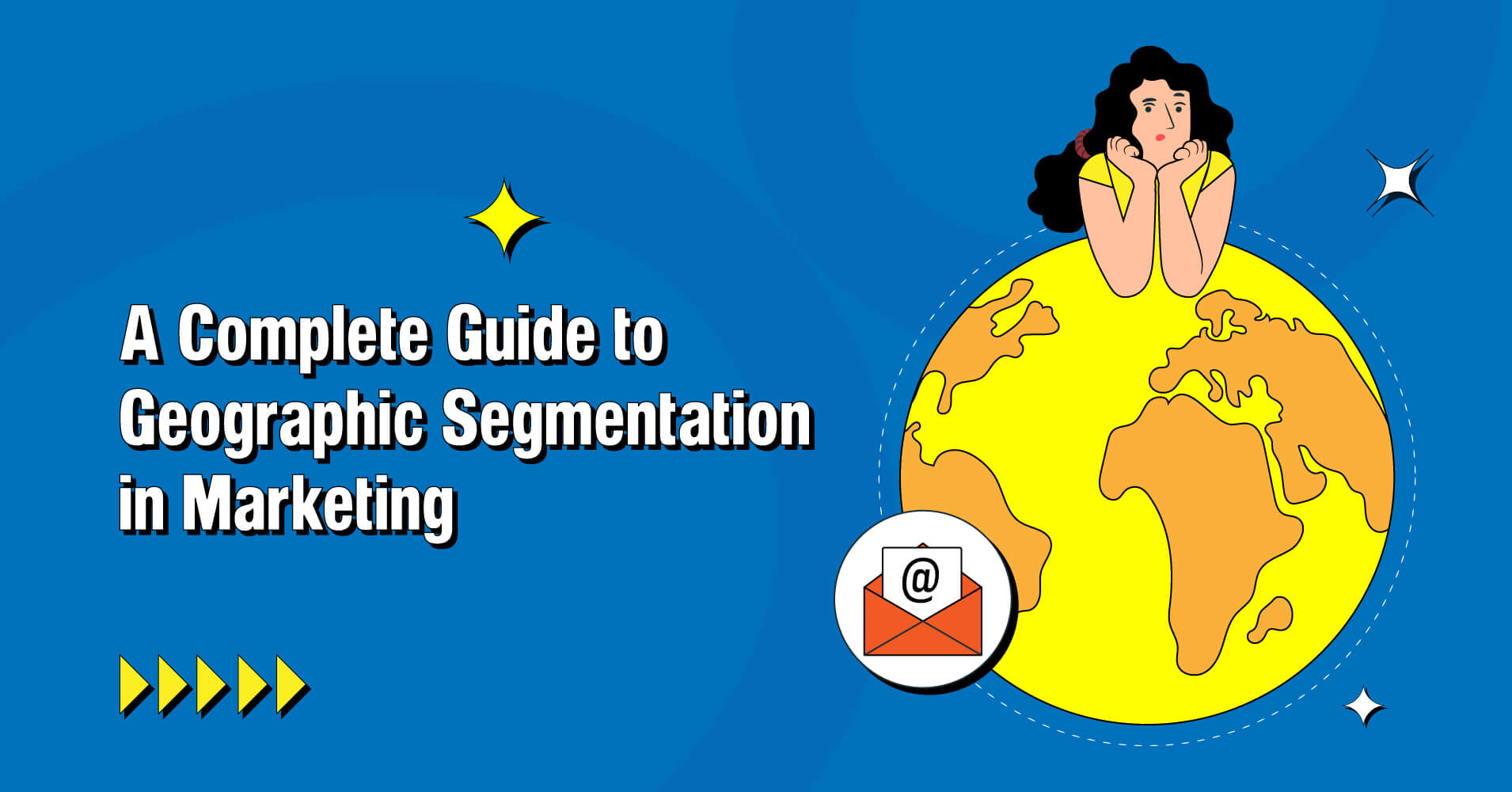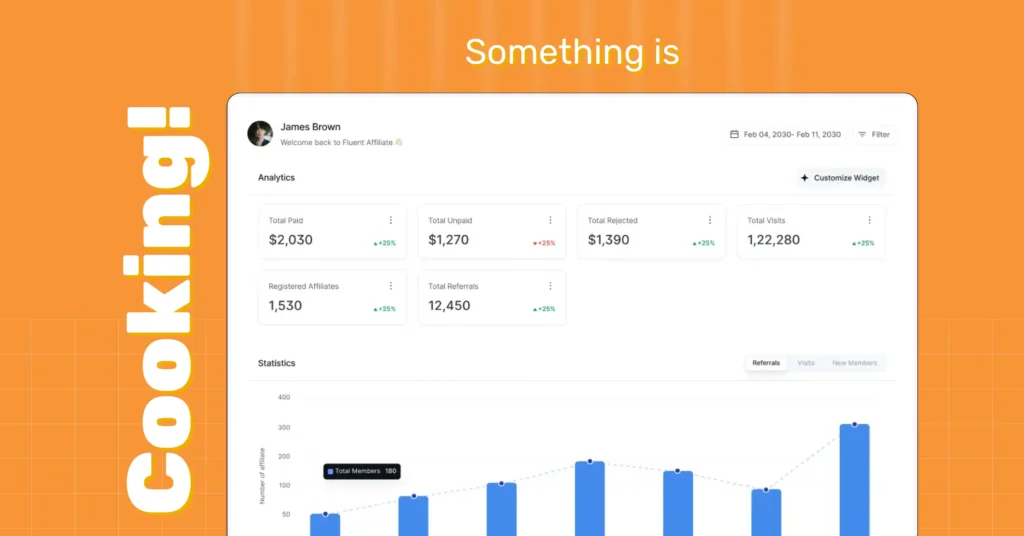
A Complete Guide to Geographic Segmentation in Marketing: Definition, Examples, and Tips
In a world with 195 countries and 7 continents, along with countless divisions based on states, ethnicity, religion, and languages, it’s clear that a one-size-fits-all marketing technique won’t suffice, right?
And that’s where the importance of geographic segmentation in marketing comes into play!
Geographic segmentation can be the most important component of your marketing plan, whether you wish to expand internationally or just focus on a large country like the USA with its 50 states. You can seamlessly take your marketing efforts to the next height by dividing your target market based on geography!
So, let’s learn more about the concept of geographic segmentation in marketing, its importance in reaching out to different markets, and how you may use it effectively in your marketing efforts.
Let’s start!
What is Geographic Segmentation in Marketing?
Geographic segmentation in marketing is a strategy that divides a target market into specific geographic categories such as countries, regions, cities, or climate zones. This method helps brands tailor their products, services, and marketing messages to meet the unique needs and preferences of customers in each area.
People living in different regions may have distinct cultural norms, languages, climate conditions, or economic factors that influence their buying decisions. And, by segmenting the market geographically, businesses can design marketing strategies that meet the needs of each of them, regardless of where they come from or what culture they belong to.
Businesses can use this segmentation strategy to customize their products, services, pricing, distribution routes, and marketing messages to the needs and preferences of different geographic segments. A clothing firm, for example, may develop specialized product lines to cater to the fashion tastes of customers in various territories, taking into account weather variations and cultural trends.
Similarly, a fast-food chain may adjust its menu offerings to suit the local tastes and preferences of customers in different countries or regions.
Why Geographic Segmentation is Important for Your Business?
Because there are various types of segmentation methods, you may be wondering why geographic segmentation can be the best option for you!
Well, while behavioral, psychographic, and demographic segmentation are all useful, geographic segmentation has certain advantages that set it apart from the rest. It’s the only segmentation approach that understands that geography influences consumer behavior, preferences, and purchase decisions.
Geographic segmentation enables you to harness the power of geography, allowing you to create marketing strategies that actually connect with the hearts and minds of customers in specific areas. By combining geographic segmentation with other segmentation approaches, you may keep your company ahead of the competition in an increasingly competitive market.
Here are some of the reasons why geographic segmentation should be prioritized:
- Relevant messaging: Geographic segmentation allows you to speak directly to the unique needs and preferences of customers in different regions. By crafting messages that align with local cultural norms, languages, and preferences, you can connect with your audience on a deeper level, foster stronger brand connections and build an everlasting relationship.
- Efficient resource allocation: By focusing your marketing resources on specific geographic segments, you can maximize their impact. Instead of spreading your efforts thin, you can concentrate on areas that offer the highest potential for success. This targeted approach will minimize waste, optimize your marketing budget, and improves your return on investment (ROI).
- Localization strategies: Geographic segmentation enables you to develop localized marketing strategies. This includes adapting your product offerings, pricing structures, and distribution channels to meet the specific demands of each region. By catering to local tastes and preferences, you can position your business as a trusted and preferred choice.
- Competitive edge: Geographic segmentation gives you a competitive advantage by uncovering untapped opportunities. By analyzing each segment’s unique characteristics, you can identify gaps in the market and develop innovative solutions to address them. This differentiation will help you stand out from competitors and establishes your brand as the go-to option for customers in specific locations.
- International expansion: For businesses eyeing global growth, geographic segmentation is a must! It allows you to navigate the complexities of international markets by tailoring your marketing strategies to suit diverse regions.
- Seasonal and climate considerations: Geographic segmentation allows businesses to adapt marketing messages and product offerings based on regional weather patterns. And due to this businesses can better meet the needs and desires of customers in different locations throughout the year.
- Government and regulatory compliance: Geographic segmentation helps businesses navigate government regulations and compliance requirements specific to different regions. By understanding the legal and regulatory landscape of each geographic segment, businesses can ensure their marketing efforts adhere to local laws, avoid penalties, and maintain a positive brand image.
Also read: Why segmentation is important for your business
Geographic Segmentation Variables
Geographic segmentation utilizes various variables to divide a target market based on geographic factors. These variables provide businesses with a framework for understanding and targeting specific geographic segments based on factors such as region, climate, cultural preferences, etc.
By leveraging these variables, businesses can develop marketing strategies that align with the unique characteristics and needs of each geographic segment, ultimately driving better customer engagement and business results.
Here are some common geographic segmentation variables:
Region
People’s culture, tastes, and preferences might vary by region, and every region has distinctive characteristics such as cultural norms, financial factors, and market preferences! As a result, segmenting the market based on location (City, State, Country) is a reasonably popular segmentation variable, particularly for organizations aiming to do business on a worldwide scale.
Businesses can use segmentation characteristics to understand and target certain geographic areas such as cities, states, and countries. Furthermore, by segmenting by region, firms can adjust their marketing efforts to meet the specific needs and tastes of clients in various regions.
For example, marketing campaigns in urban areas may emphasize convenience, fast-paced lifestyles, and easy access to a variety of products and services. Rural marketing initiatives, on the other hand, may highlight communal values, a slower pace of life, and products or services tailored to the needs of rural residents.
Climate
When it snows in one region of the world, it’s quite usual for people to spend their summers on the beach in another! And it’s logical that people from hot regions may prioritize purchasing things that provide heat relief, whilst people from cold climates may prioritize purchasing products that provide warmth and comfort!
That’s why, climate plays a significant role in geographic segmentation. By understanding the climate-related demands of different regions, businesses can tailor their product offers, message, and promotional efforts to match the distinct needs of customers in the various regions.
And, no need to mention, it will make marketing activities more relevant and successful, which will raise client engagement and happiness!
Population
As a business owner, you must have a clear awareness of the market size and genuine market potential. Targeting heavily populated regions can result in higher sales and revenue. Smaller populations, on the other hand, might require distinct targeting tactics, such as personalized marketing approaches or specialist product offerings.
The population’s financial situation is another significant factor. People in developed countries may be more interested in luxury goods than people in developing countries. That’s why the population is an essential factor in geographic segmentation.
By comprehending the demographic patterns in various places, firms can optimize their marketing initiatives and guarantee a more effective resource allocation.
Culture
Cultural variables influence customer preferences, decision-making processes, and purchasing patterns. As a result, cultural segmentation is critical for businesses to grasp the various cultural norms, attitudes, and behaviors of various locations.
Businesses can customize their marketing techniques to resonate with specific cultural groups if they recognize and respect cultural differences such as customs, traditions, habits, and social norms.
Marketing campaigns during festive seasons or holidays, for example, can use cultural symbols, customs, or ideas that are meaningful to the target audience. Thus, businesses will be able to interact with customers on a deeper level, build brand loyalty, and establish long-term partnerships by harnessing cultural knowledge.
Ethnicity & religion
Different ethnic and religious groups may have different shopping patterns, values, and preferences. Businesses can establish customized marketing strategies by studying and catering to the tastes and demands of various ethnic and religious groups.
For instance, food businesses might provide products with specific dietary needs or religious dietary requirements. Furthermore, corporations can use cultural celebrations, holidays, or events connected with specific ethnic or religious groups to develop tailored marketing efforts that appeal to these communities.
Language
Speaking in the language of your target audience has a huge impact on any business. Language-based segmentation is especially essential if you wish to conduct your business in multilingual countries or regions where language preferences heavily influence consumer behavior.
Businesses may build trust, strengthen connections, and create a sense of familiarity by speaking the language of their customers. This may include translating marketing materials, altering slogans, or leveraging local language influencers or spokespeople.
Real-life Examples of Effective Geographic Segmentation in Marketing
Geographical factors have always been a key factor in business development, and businesses that carefully analyzed and utilized these factors have ultimately enjoyed the benefits of their efforts. In fact, if you want to expand your business globally, geographic segmentation is the dynamic weapon you must use!
Here are some examples of well-known companies that effectively used geographic segmentation in their marketing approach:
Region-based Geographic Segmentation
McDonald’s, one of the most popular global fast-food businesses, is a perfect illustration of how regional segmentation may be used efficiently. Since they have stores practically everywhere in the world, they tailor their marketing strategy and menu to the diverse interests of each region.
In India, for example, McDonald’s provides a variety of vegetarian alternatives to cater to the country’s largely vegetarian population. They have created innovative dishes such as the McAloo Tikki burger, which is made with a potato and peas patty and adheres to Indian dietary standards.
Climate-based Geographic Segmentation
The North Face is an outdoor clothing brand that customizes its product offers based on climate. They create and market several types of apparel and equipment to cater to varied temperature situations.
For example, in regions with lower temperatures, it provides insulated jackets, thermal base layers, and snow gear to fulfill the needs of customers. In contrast, they offer lightweight and breathable sportswear ideal for outdoor activities in warmer regions.
Population-based Geographic Segmentation
The well-known coffeehouse business, Starbucks, effectively employs population-based segmentation in its store location strategy. Based on population density and demographic characteristics, the firm carefully builds and opens outlets.
They deliberately establish numerous outlets in densely populated urban regions. These outlets often serve as social gathering places, workspaces, or meeting places for the community. That’s why Starbucks attempt to open as many stores as possible so that consumers can visit them at any time.
Starbucks, on the other hand, concentrates on opening larger outlets with drive-thrus in less heavily populated areas or suburban areas.
Culture-based Geographic Segmentation
Coca-Cola understands the significance of cultural differences and uses cultural segmentation effectively in its marketing campaigns to reach out to varied consumer groups throughout the world.
Coca-Cola, for example, releases special edition packaging with culturally relevant symbols, colors, or greetings during significant cultural festivities or festivals such as Chinese New Year, Eid, Diwali, or Christmas.
Furthermore, Coca-Cola frequently creates tailored advertising campaigns that reflect regional cultural values and traditions.
Ethnicity & Religion-based Geographic Segmentation
Unilever, a multinational consumer goods company, effectively uses ethnicity and religion as product segmentation characteristics. The organization understands the varying demands and preferences of different ethnic and religious groups and tailors its products to meet those needs.
For instance, in regions with a significant Muslim population, Unilever offers a range of halal-certified personal care products, including shampoos, soaps, and cosmetics.
Language-based Geographic Segmentation
Netflix uses language segmentation to adapt to its global audience’s different language preferences. They appreciate the importance of language in offering a personalized and inclusive user experience.
They give subtitles and audio options in several languages for their original shows and movies to promote accessibility and engagement, allowing viewers to enjoy the material in their favorite language. Furthermore, Netflix invests in generating unique material in a variety of languages to cater to certain regional markets.
How to Use Geographic Segmentation in Marketing
Geographic segmentation is an effective tool for organizations to target specific regions, change marketing strategies, and connect with customers on a local level. However, success requires a dedicated process!
Businesses must collect relevant data and do extensive market research before using geographic segmentation. This may entail evaluating demographic data, customer behavior patterns, and market trends, and even conducting surveys or focus groups in various geographical areas.
Here are some critical methods for using geographic segmentation efficiently in your marketing efforts:
Collect and Analyze Geographic Data
The first step in using geographic segmentation is gathering relevant data about your target market’s location-based characteristics. Analyze demographic information, population density, cultural diversity, climate patterns, and language preferences.
This data will provide insights into the unique needs and preferences of different regions, allowing you to make informed marketing decisions.
Identify Target Segments
Once you have collected the necessary data, identify specific geographic segments that align with your marketing objectives. Consider factors such as regional preferences, consumer behavior, and market potential. By narrowing down your target segments, you can focus your resources and efforts on areas that offer the most promising opportunities for business growth.
Tailor Products and Services
To effectively engage with each geographic segment, it’s crucial to adapt your products or services to their specific needs and preferences. Customize features, packaging, or pricing to cater to the unique demands of each region.
By offering region-specific solutions, you can enhance customer satisfaction and increase the perceived value of your offerings.
Localize Marketing Campaigns
Crafting localized marketing campaigns is key to resonating with your target geographic segments. Develop messages, visuals, and promotions that incorporate local references, cultural nuances, or regional events.
By speaking directly to the interests and experiences of your target audience in each region, you can create a deeper connection and drive engagement.
Select the Appropriate Channel
By leveraging the appropriate channels, you can amplify the reach of your marketing messages and increase the likelihood of connecting with your intended audience.
Choose the right marketing channels to effectively reach your target geographic segments. Consider the media outlets, social platforms, and online forums that are popular within each region.
Geographically Targeted Promotions
Implement promotions and incentives that are specific to each geographic segment. This could include region-specific discounts, limited-time offers, or location-based rewards. By tailoring your promotions to the unique characteristics of each region, you can create a sense of exclusivity and encourage customer engagement.
Monitor and Refine
Continuously monitor the performance of your geographic segmentation strategy and make data-driven adjustments as needed. Analyze sales data, customer feedback, and market trends to evaluate the effectiveness of your marketing campaigns within each segment.
By staying agile and adapting your approach based on insights gained, you can optimize results and maximize the impact of your marketing efforts.
How to Apply Geographic Segmentation in Your Email Marketing Campaigns
Geographic segmentation helps you to successfully target your audience, and email is the most effective medium for reaching potential customers at their doorsteps. Now, imagine the impact you can have by combining the precision of geographic segmentation with the efficacy of email marketing!
By tailoring your messages to specific regions and delivering personalized content, you can captivate your audience on a local level, boosting engagement and driving conversions. And, here’s how to use geographic segmentation in your email marketing campaigns:
- Choose the right automation tool: It all starts with choosing the right email automation tool. Look for a solution that allows for strong segmentation based on geographic parameters. Check if it allows you to design targeted campaigns for multiple regions, cities, or nations and that it has full automation abilities. What else? Check to see if it is inexpensive and beneficial for your wallet!
- Capture geographic data: Start by gathering geographic information from your subscribers. Include city, state, and country fields in your sign-up forms or preference centers. You can also use IP address tracking to automatically acquire location information.
- Select your segmentation variable: Choose the segmentation variable that best fits your company’s needs and goals. It might be language, religion, locality, or any other variable that best describes your business. Remember that the success of your company is significantly dependent on this stage.
- Segment your email list: Once you have the geographic data, and decided your segmentation variable, now it’s time to segment your email list. This segmentation will allow you to create targeted campaigns that resonate with specific local audiences.
- Localized content and offers: Tailor your email content and offers to each geographic segment. Consider regional preferences, local events, or cultural aspects. For example, you can highlight specific products or promotions that are relevant to a particular region.
- Localized subject lines: Craft subject lines that speak directly to the interests or concerns of your geographic segments. Incorporate local references or personalized location-based offers to capture the attention of your recipients and increase open rates.
- Timing and time zone considerations: When scheduling your email campaigns, take into account the time zones of your different geographic segments. Ensure that your emails are delivered at an optimal time for each region, avoiding inconvenient hours or holidays.
- Localized imagery and visuals: Enhance the visual appeal of your emails by using images and visuals that resonate with each geographic segment. Incorporate local landmarks, scenery, or cultural symbols to create a sense of familiarity and connection.
- Call-to-action: Customize your calls-to-action to suit the preferences and needs of each geographic segment. Use location-specific language and encourage recipients to take actions that are relevant to their region. This personalization increases the likelihood of engagement and conversions.
- Track and analyze performance: Measure the performance of your email campaigns by geographic segment. Monitor metrics such as open rates, click-through rates, and conversions to evaluate the effectiveness of your geographic segmentation strategy. Use this data to refine and optimize your future campaigns.
Implementing Geographic Segmentation in Your Email Marketing Strategy
Most email automation tools allow for implementing geographic segmentation. FluentCRM is a robust email marketing automation platform with dynamic features that enable you to segment your contacts based on geographic parameters.
With FluentCRM, you can quickly implement geographic segmentation and use it to send targeted and customized content to particular areas, cities, or nations.
Try Our Free Marketing Automation Plugin for WordPress!

Here’s how you can use FluentCRM to segment your contacts:
- In your FluentCRM dashboard, navigate to the “Contacts” tab and click on “Segments” from the dropdown menu.
- Click on the “Create Custom Segment” button to create a new segment.
- Give your segment a descriptive name to easily identify it later. Now, click on the ‘Add’ option and select ‘Contact’. You’ll have several options to choose from, such as country, state, or city. Select the criteria that align with your desired segmentation. For instance, we’ll go for the country.
- After choosing your geographic criteria, set the condition and value. For example, if you want to segment contacts based on the country, you can select “Includes in” as the condition and enter the specific country name in the value field.
- You can further refine your segment by adding multiple criteria using the “Add” button. This allows you to create complex segmentation rules based on geographic and other variables.
- Once you’ve defined your segmentation criteria, click on the “Save” button to save the segment.
Excellent work! This segment is now complete and ready for use.
You can now choose this segment as your target audience when designing an email campaign or automation, ensuring that your message reaches the particular contacts who live in the United States.
Wrapping up
Well, that’s all for today. We hope that this post will assist you in creating the greatest segmentation strategy possible, one that will be successful. We wish you all the best for your future undertakings and encourage you to leave your thoughts in the comment box.







Leave a Reply